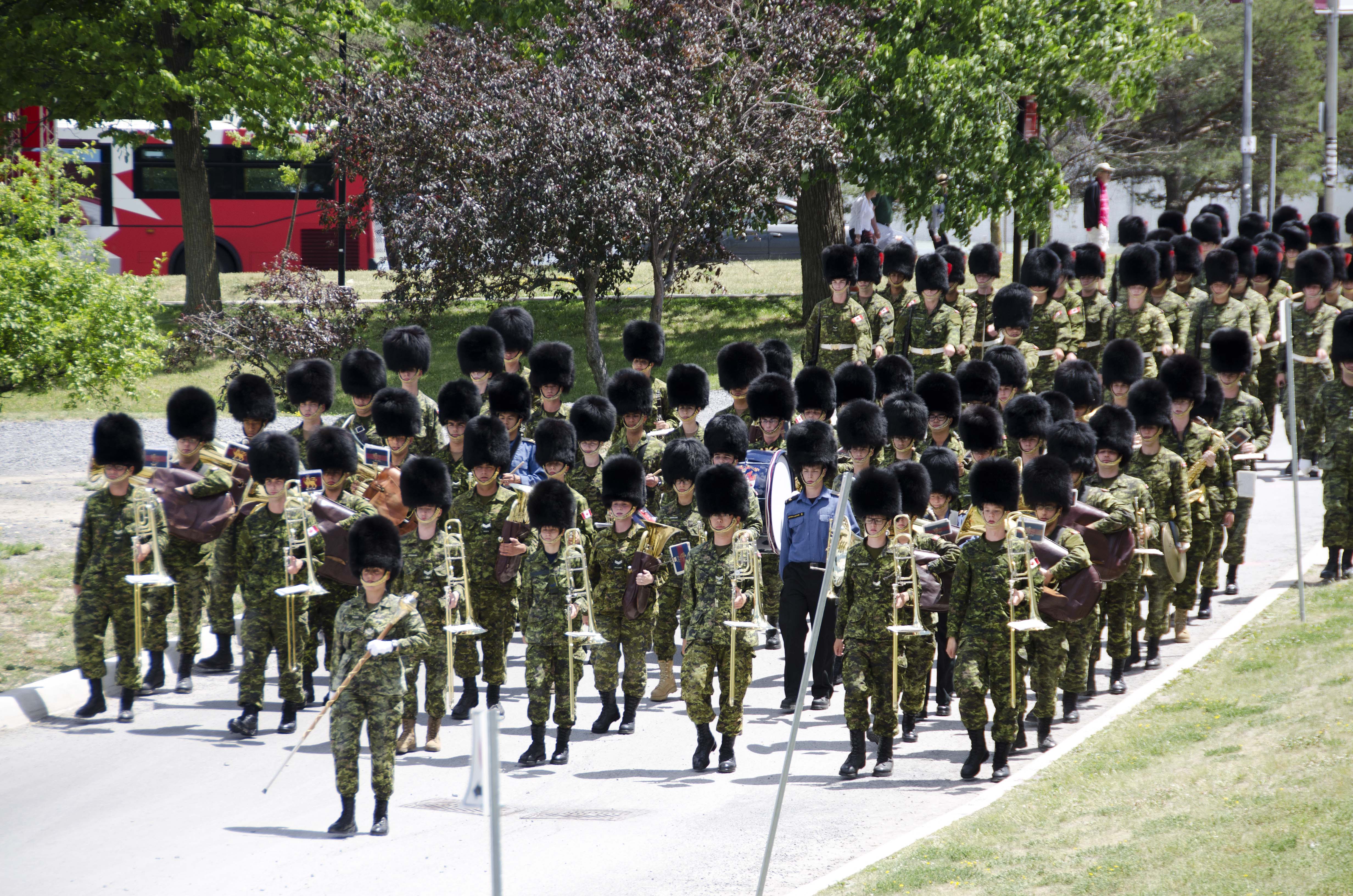For 22 years, Carleton’s campus has been partially transformed into training grounds for the Ceremonial Guard of the Canadian Armed Forces to practice its summer duties on Parliament Hill.
According to David Sterritt, the former director of housing at Carleton and a liaison for the Ceremonial Guard accommodations, the members of the Ceremonial Guard are staying in Stormont and Dundas Houses this summer.
“The accommodations are the same accommodations that we would be offering to university students during the academic year,” he said. “We have a capacity to accommodate 3,600 residence students but there’s only 350 members of the Ceremonial Guard, so we only have to use one particular building.”
Sterritt said he first contacted the Ceremonial Guard in 1995 after the federal government closed Ottawa’s Canadian Forces Base Uplands.
“Back at that time . . . because the Ceremonial Guard was based [at Uplands] in the summer months, it occurred to me that they might be looking for another place to stay,” Sterritt said. “And because the university operates a fairly large summer accommodation program using its residences and dining services, I made some contact with National Defence to see if the Ceremonial Guard would be interested in relocating to the Carleton campus.”
Captain Michael Wonnacott, the public affairs officer for the Ceremonial Guard, said there are minimal differences between training on a military base and training on Carleton’s campus.
“We still rely on the same military chain of command, [members] still have to conduct themselves with the same rules and dress and comportment,” Wonnacott said. “There is a bit more awareness of the public because there’s obviously civilians everywhere.”
Wonnacott said the Ceremonial Guard’s duties on Parliament Hill commence on June 26 and run until the end of August, after their initial inspection by the Governor General on June 25.
“The parade that we do, so marching from Cartier Drill Hall to Parliament Hill and then doing the changing of the guard, that’s all part of the ceremony,” he said. “[It] bears a similarity to a tradition that we perpetuate from the United Kingdom, namely the changing of the guard that’s conducted by Buckingham Palace.”
Corporal Gabrielle Porter, a tuba player in the band and a section commander, said before the public duties begin on the Hill, her and her colleagues are in the training phase of the Ceremonial Guard.
“We’re practicing the actual ceremony so that we can do it on the Hill,” Porter said. “So once public duties start at 10:00 every day at Parliament Hill, we’ll be doing what we’ve been training the past six weeks for.”
Porter said a typical day of training in May and June begins at 5:30 a.m.
“We’ll go for a run, do some push-ups, get in shape because it’s a pretty physically demanding job,” she said. “After breakfast we have a uniform inspection and just rehearsals and drill[s] . . . And at the end of the day when we’re all done, we polish our boots and iron our pants.”
Sterritt said the Ceremonial Guard currently uses part of parking lot six as a parade square and the maintained turf near parking lot seven to practice for marching on the grass at Parliament Hill.
Wonnacott said the Ceremonial Guard is an important part of Canada’s history, although the tasks are only run in the summer.
“The Ceremonial Guard basically represents the Canadian Forces, specifically the army,” he said. “It allows us to represent our heritage and our history in the nation’s capital at the focal point of our government.”






